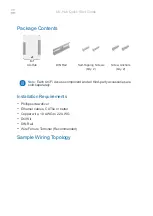
11/2015
NT BEA-G6EVO
V3.0
EN
p. 26/58
3.4.6. Check the capacity of the lost casing or the excavation to receive the bollard
Check the entire height and length of the embedded lost casing. It must comply with the foundation drawing. Make
sure that there is no missing concrete underneath the lost casing. Check that the drainage system is efficient and that
it drains 20 liters in 5 minutes, that is, 4 liters / minute.
Make sure the inside of the lost casing is clean. It must be free of concrete residues which could compromise the
proper positioning of the bollard or even the mechanical movement.Check the depth at the bottom of the lost casing.
It must comply with the dimensional characteristics detailed in the foundation drawing.
If the lost casing is embedded too low, the bollard will not rest on the bottom of the lost casing but will hang the edge
of the cover up on the ground surface. And this is prohibited.
If the lost casing is embedded too high, the bollard will overhanging the ground surface and creates a dangerous
obstacle for pedestians. And this is prohibited.
Clean the surroundings of the excavation. Remove anything that may damage the bollard coating.
Important: the height of the concrete foundation must be under the finishing floor level, so it leaves enough space for
the top layer. This space must not exceed 6 cm.
Before using the access point, the concrete must cure for at least 28 days.
3.4.7. Bollard positioning
Before bollard positioning, make sure that the unpacking and handling actions have been executed properly.
- Place the bollard onto the excavation or in the lost casing and check that it is positioned correctly.
- Pass the sheath extremities through the casing’s hole and leave a few centimeters inside the bollard.
- For a good bollard’s stability, inject the polyurethane foam between the casing and the excavation (lost casing).
Figure 31: Bollard installed
Figure 30: Bollard positioning
















































